Embark on a captivating and rewarding journey as you delve into the world of Kentucky Saddlebred riding lessons. Through an immersive and comprehensive program, you will not only uncover the fascinating history, characteristics, and role of these equine stars but also master essential horsemanship skills. This learning experience promises to equip you with the necessary knowledge and techniques to become a confident and skilled rider, paving the way for your future success, both in and out of the saddle.
Table of Contents (Horspedia)
Breed History & Characteristics
Introducing the Kentucky Saddlebred
Objective: To develop a basic understanding of the history and development of the Kentucky Saddlebred and its role in various equestrian disciplines.
Step 1: Begin with a brief history lesson
- 1.1 Explore the origins of the breed: The Kentucky Saddlebred can trace its roots back to the smooth-gaited Narragansett Pacer and Galloway horse breeds brought to America in the 17th and 18th centuries. These early horse breeds were crossed with Thoroughbreds to produce an elegant yet powerful horse, eventually resulting in the development of the American Saddlebred.
- 1.2 Discuss the breed’s role in American history: Throughout the 18th and 19th centuries, the Kentucky Saddlebred played an important role in American culture and history, serving as both a utility and sport horse. They became the horse of choice for plantation owners, who valued the breed’s comfortable and smooth gaits, and during the Civil War, many Generals and officers favored them as their riding mounts.
Step 2: Dive into breed characteristics
- 2.1 Describe their physical traits: The Kentucky Saddlebred is easily recognizable by its elegant build and characteristic high head carriage. Key features include a refined head with large, expressive eyes, a long, arched neck, flat back, strong legs, and muscular hindquarters. They typically stand between 15 to 17 hands high and come in a variety of colors, including chestnut, black, gray, and bay.
- 2.2 Explain the different gaits: In addition to the standard walk, trot, and canter, Kentucky Saddlebreds are known for their smooth intermediate gaits: the slow gait and the rack. The slow gait is a four-beat gait in which the horse moves each foot individually, resulting in a smooth and comfortable ride. The rack is an even faster version of the slow gait and showcases the incredible athleticism and grace of the breed.
Step 3: Explore their roles in equestrian disciplines
- 3.1 Focus on the show ring: Kentucky Saddlebreds have long been a popular choice for saddle seat competitions due to their smooth gaits, beautiful movement, and exceptional presence. They excel in a variety of classes, including Three-Gaited, Five-Gaited, Fine Harness, and Pleasure classes, and are known for their natural flair and crowd-pleasing performances.
- 3.2 Emphasize their versatility: While most commonly associated with saddle seat, Kentucky Saddlebreds are incredibly versatile and can be found competing successfully in a wide range of disciplines, such as dressage, show jumping, western pleasure, and combined driving events.
Step 4: Maintain breed integrity
- 4.1 Discuss responsible breeding practices: As an enthusiast or hobbyist, it’s crucial to promote and support responsible breeding practices that preserve the health, athleticism, and unique qualities of the Kentucky Saddlebred.
- 4.2 Support breed organizations and shows: Organizations such as the American Saddlebred Horse Association (ASHA) work to promote the breed, offer educational resources, and organize shows and events that showcase the beauty and talent of Kentucky Saddlebreds. By supporting these organizations and attending their events, you can contribute to the success and longevity of the breed.
Conclusion: With their elegance, smooth gaits, and spirited nature, the Kentucky Saddlebred continues to captivate the hearts of equestrians and spectators alike. As an equestrian enthusiast or hobbyist, understanding the breed’s rich history, unique traits, and role in various equestrian disciplines will provide the foundation to appreciate and enjoy these remarkable horses.

Photo by bendavisual on Unsplash
Basic Horsemanship
Understand the horse’s behavior: Spend some time observing horses in their natural environment, particularly the Kentucky Saddlebred horse you will be riding. Notice the body language and interactions between horses. Understanding equine behavior will help you become a better rider and horse handler.Learn about horse care: Familiarize yourself with basic horse care responsibilities, such as grooming, tacking, and feeding. Talk to experienced horse owners, read books about horse care, and visit stables to gain a better understanding of these tasks.Grooming: Grooming is an essential part of horse care. Not only does it keep the horse’s coat clean and healthy, but it also allows for bonding between the horse and rider. Learn the proper technique for grooming, using tools like a curry comb, body brush, mane comb, and tail brush. Groom your horse before and after each riding session to keep their coat in the best condition.Tacking: Tacking refers to putting on the saddle and bridle before riding. Familiarize yourself with the different parts of the saddle (i.e., pommel, cantle, stirrup leathers, girth, etc.) and bridle (i.e., bit, cheekpieces, noseband, and reins). Learn how to properly tack up a Kentucky Saddlebred horse, ensuring a comfortable and secure fit for both you and your horse.Feeding: Proper nutrition is essential for a healthy horse. Learn about the types and amounts of feed and forage that are appropriate for your Kentucky Saddlebred. Get to know the feeding schedule at your riding stable and be prepared to provide any necessary supplements or medications as directed by the stable manager or veterinarian.Handling: Learn proper techniques for leading, halting, turning, and backing up a horse while on the ground. Develop the ability to read the horse’s body language and respond appropriately to keep both you and the horse safe.Mounting and dismounting: Practice correct techniques for safely mounting and dismounting a Kentucky Saddlebred horse. This includes approaching the horse’s shoulder, placing your foot in the stirrup, swinging your leg over the saddle, and settling gently into the seat. When dismounting, ensure you maintain control of the reins while swinging your leg back over and stepping down from the saddle.Basic riding skills: Once you are comfortable with grooming, tacking, and handling, you will begin to learn basic riding skills. These include walking, trotting, and cantering, as well as proper positioning, seat balance, and rein control. Develop a strong foundation in these basic riding skills before moving on to more advanced riding techniques specific to the Kentucky Saddlebred breed.Kentucky Saddlebred-specific skills: As you progress in your riding lessons, you will learn skills tailored to the distinctive characteristics of the Kentucky Saddlebred breed. This may include learning about the breed’s unique gaits, such as the slow gait and rack, as well as proper showmanship and riding etiquette specific to Saddlebred competitions.Ongoing education: In horsemanship, there is always more to learn. Continue to expand your knowledge and skills by attending clinics, competitions, and workshops, and seeking advice from experienced riders and trainers. Enjoy the journey as you become an accomplished Kentucky Saddlebred rider and horseman.
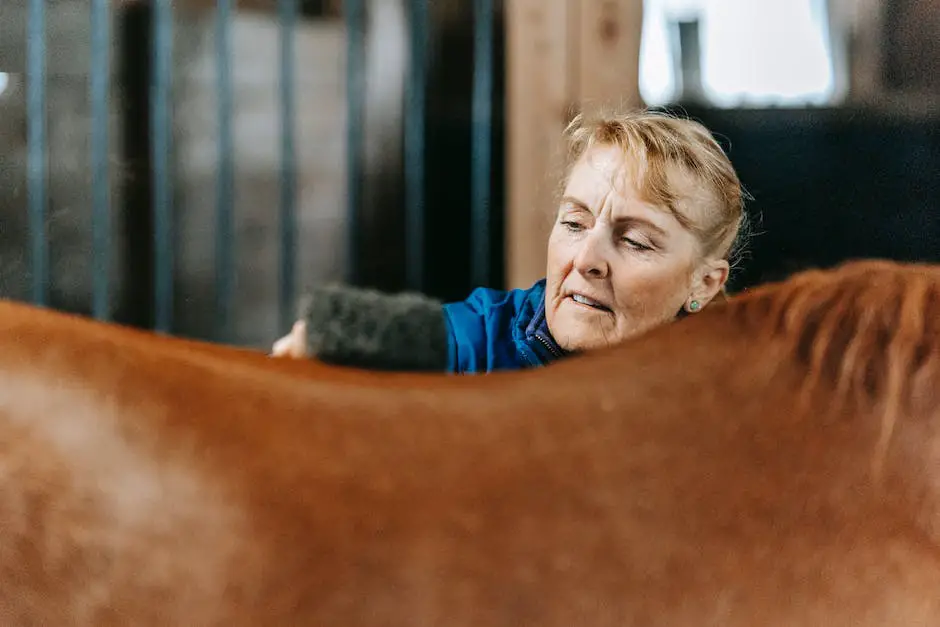
Mounting & Dismounting Techniques
Before attempting to mount or dismount a Saddlebred horse, it is essential to familiarize yourself with the proper safety measures and techniques. The following instructions will help guide you through the process of safely and effectively mounting and dismounting your Kentucky Saddlebred horse.Mounting Your Saddlebred Horse:
1. Ensure your horse is properly groomed and saddled before attempting to mount. Check that the girth strap is securely fastened and the stirrups are adjusted to the appropriate length.
2. Stand on the left side of your horse, with the stirrup closest to you. This side is traditionally used for mounting as it was easier for knights wearing a sword on their left hip to mount from this side.
3. Prior to mounting, it is important to gently rub your hand along the horse’s side to let him know you are about to mount. This will help avoid surprising the horse and potentially causing it to become spooked.
4. Holding the reins in your left hand, grasp the saddle horn or pommel with the same hand. Ensure you have a firm grip on the reins so that you can control the horse if it moves unexpectedly.
5. With your right hand, take hold of the stirrup and insert your left foot. Make sure you are wearing proper riding boots with a sturdy heel, which will help prevent your foot from sliding through the stirrup.
6. Using both hands, apply even pressure on the saddle horn (or pommel) and the stirrup, then gently swing your right leg over the back of the horse, avoiding contact with its hindquarters.
7. Lower yourself slowly onto the saddle, making sure to keep your weight evenly distributed between both legs and not slamming down into the seat.
8. Adjust your position in the saddle so that your weight is comfortably distributed, and place your right foot in the right stirrup.
9. Double-check that both stirrups are at the correct length and that you have proper control of the reins before starting your ride.
Dismounting Your Saddlebred Horse:
1. Bring your horse to a complete halt and choose a safe, flat area for dismounting. Make sure there are no hazards or obstacles nearby that could pose a risk during the dismounting process.
2. Hold the reins firmly in your left hand, keeping the horse’s head slightly turned towards you to maintain control.
3. Using your right hand, grasp the saddle horn or pommel.
4. Remove your right foot from the right stirrup and gently swing your leg over the back of the horse while keeping your weight balanced and centered.
5. Carefully remove your left foot from the left stirrup and slowly lower yourself to the ground, landing softly on both feet.
6. Once safely on the ground, ensure you maintain a firm grip on the reins to continue controlling your horse and preventing any unexpected movements.
7. Offer positive reinforcement and praise to your horse for a successful ride and dismount.
With consistent practice of these mounting and dismounting techniques, you’ll be better prepared for a safe, confident, and enjoyable Kentucky Saddlebred riding experience. Remember to always practice patience and treat your horse with respect, fostering a strong bond and trust between you both.
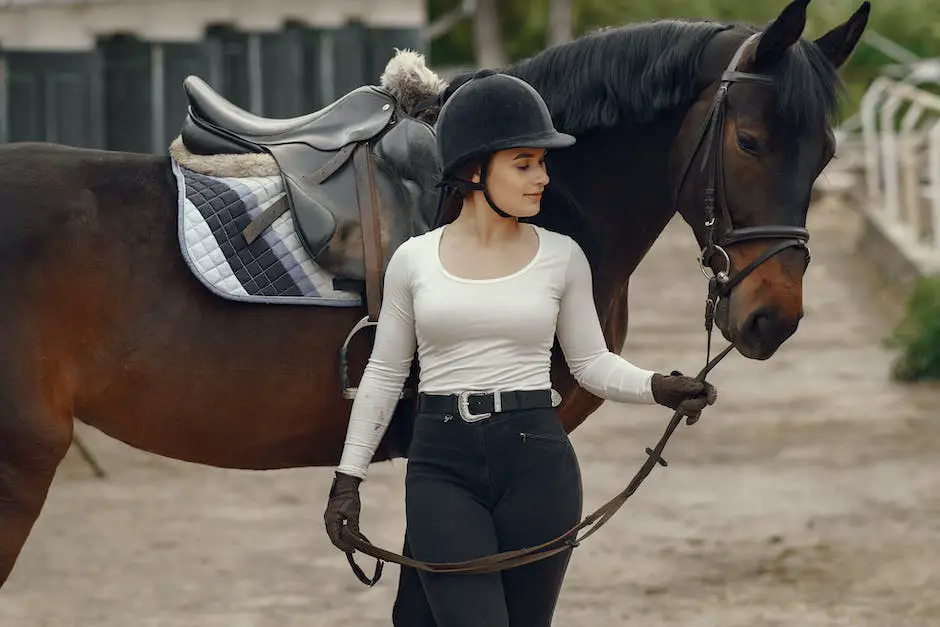
Riding Posture & Balance
Before diving into the instructions, it’s important to note that taking in-person riding lessons from a qualified instructor is crucial in ensuring your safety and developing your riding skills. Practice under their supervision, as they’ll be able to provide personalized guidance and assure your progress.However, to support your in-person lessons, here are some general instructions on riding posture and balance for Kentucky Saddlebred riding lessons focusing on the seat in the saddle:1. Mounting the horse: With your instructor’s assistance, mount the horse and settle into the saddle. While mounting, grasp the pommel of the saddle, and place your left foot in the left stirrup. Push yourself up and swing your right leg over the horse’s back, gently lowering yourself into the saddle. Keep your feet in the stirrups with the balls of your feet resting on the stirrup treads.2. Finding the right saddle position: Once properly seated, make sure your seat bones are evenly distributed on the saddle. Sit up straight, and slightly arch your lower back to maintain proper spinal alignment.3. Aligning your body: To ensure the correct body alignment while riding, imagine a straight line running from your ear, through your shoulder, hip, and heel. Make necessary adjustments to your posture to meet this imaginary line.4. Positioning your legs: Keep your legs in a secure but relaxed position, with your heels slightly lower than your toes. Your knees should be bent and should naturally rest against the sides of your horse.5. Hand positioning: Hold the reins with a gentle grip, keeping your hands about six inches apart and slightly above the withers. Your thumbs should be on top, and your knuckles should point outward, maintaining a slight bend in your elbows.6. Maintaining balance: Focus on maintaining a proper alignment and balance while riding. Distribute your weight evenly across your seat and thighs, and keep your lower legs relaxed to avoid bouncing in the saddle.7. Breathing and relaxation: Remember to breathe naturally and deeply while riding, as this will help you maintain a relaxed posture and lessen any tension in your body. Riding in a tense state can negatively impact your balance.8. Looking ahead: Always look ahead in the direction you want your horse to go. This will not only help with steering but will also assist with maintaining a balanced posture.9. Perfecting your seat: Practice walking, trotting, and cantering to further develop your seat and feel for the horse’s movements. Focus on matching your body’s rhythm to the horse’s gait to create a secure, comfortable seat.10. Continuous learning: As you grow more comfortable with your body alignment and balance while riding, your instructor can guide you through more advanced techniques and exercises tailored to Kentucky Saddlebred riding.Remember, practicing under professional supervision and taking regular lessons will help you develop the correct riding posture and achieve a balanced, secure seat in the saddle.
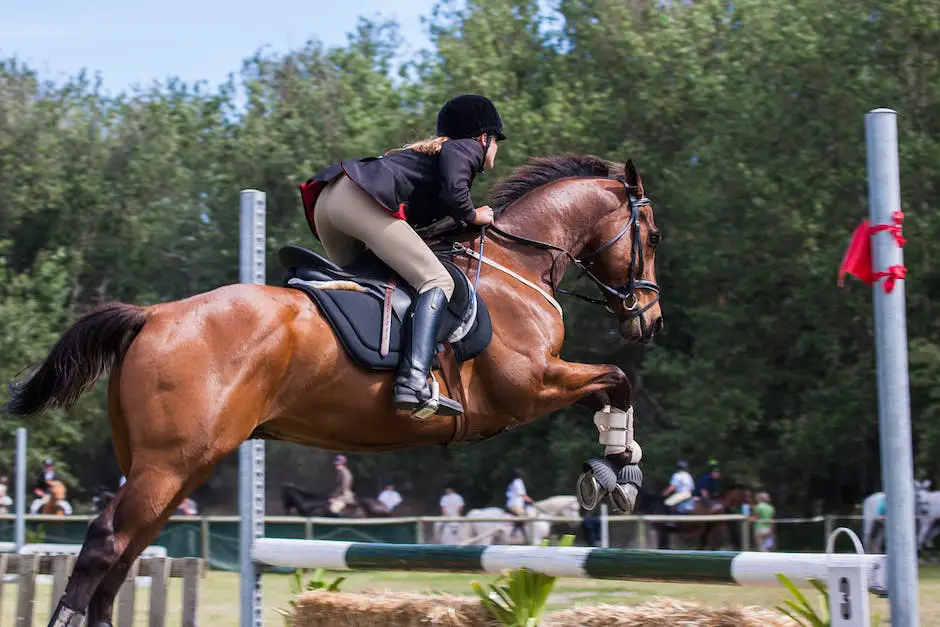
Reining & Communication
Before you can effectively communicate with your Saddlebred, it is important to understand the various tools that are used in communication, such as the reins, bit, your legs, and your seat.Grasp the reins in your hands with your thumbs on top and your fingers wrapped loosely around the bottom. Hold the reins at a comfortable length, with enough tension to maintain gentle contact with your horse’s mouth.Sit up straight in the saddle with your heels down, toes up, and knees relaxed. Maintain a proper position so you can clearly communicate your cues and maintain balance while riding.Direct rein is used to ask your Saddlebred to turn or steer in a particular direction. To communicate using the direct rein, apply gentle pressure to the rein on the side in which you want your horse to turn. For example, if you want your horse to turn left, apply gentle pressure to the left rein. Release the pressure once your horse moves in the desired direction. Neck rein is used when riding with one hand, which is common in western-style riding. To cue your horse using the neck rein, gently lay the rein against the side of your horse’s neck in the direction you want to turn. For example, to turn to the right, gently lay the left rein against the side of your horse’s neck.In addition to guiding your Saddlebred with the reins, you will use your legs to communicate your intentions. Keep your legs relaxed and wrapped around your horse’s sides, with your heels down and toes up. To signal your horse to move forward, gently squeeze both calves against your horse’s sides. Apply gentle pressure with your seat and your legs to maintain a steady, even gait. To ask your horse to slow down or halt, gently apply pressure with both legs and use your seat to slow your body movement. To ask your horse to move laterally, use the leg on the side you want your Saddlebred to move away from to apply gentle pressure. Make sure to use your reins and seat to maintain your horse’s balance.Remember that clear and precise cues will help your horse understand what you are asking them to do. With consistent practice, you will develop a strong bond with your Saddlebred and become more skilled at communicating with them.

Walking, Trotting & Canter Transitions
Before starting any riding lessons, it is essential to warm up your horse. Begin by leading your horse in a circle, allowing it to stretch its muscles and become accustomed to the weight of the rider. Spend a few minutes at each gait, starting with a walk and gradually advancing to trotting and cantering.As you begin your lesson, keep in mind that communication between you and your horse is key in achieving smooth and controlled transitions. Make sure you are maintaining a balanced seat and a consistent rein contact, which will allow you to provide clear cues to your horse.Start your lesson at a relaxed walk. Keep your heels down, your back straight and your eyes forward. Use your seat and leg pressure to gently encourage your horse to maintain a steady, even pace. Hold the reins with soft contact, avoiding any harsh or sudden actions that might confuse or upset your horse.To transition from a walk to a trot, gently squeeze your horse’s sides using your calf muscles, while simultaneously providing a slight release in rein tension. Keep your upper body tall and centered, maintaining a balanced seat throughout the transition. Aim for a smooth, even trot, avoiding any bouncing or jerking movements.While trotting, keep your hands steady and maintain consistent rein contact. Allow your hips and seat to move with your horse’s motion, absorbing the movement to maintain a comfortable, secure position. Make sure your lower legs remain in light contact with your horse’s sides to provide guidance and encouragement.To transition from a trot to a canter, first establish a balanced, steady trot. Then, shift your weight slightly to the inside and gently nudge your horse’s side with your outside leg just behind the girth. Simultaneously, provide a little more rein pressure on the inside rein. The key is a subtle weight shift and leg cue combination that encourages your horse to move into a smooth, controlled canter.At the canter, maintain a secure, balanced seat by allowing your hips to move with your horse’s motion. Keep your legs relaxed and in contact with your horse’s sides, and maintain steady rein contact to guide and control their speed and direction. Focus on relaxing your body and maintaining a steady rhythm throughout the canter.Practice transitioning between the different gaits, making sure to focus on clear communication with your horse, a balanced seat, and consistent rein contact. The goal is to achieve smooth, flowing transitions between each gait without any sudden, jerky movements.After completing your riding lesson, always remember to allow your horse to cool down properly. Gradually decrease their pace and spend several minutes walking before dismounting and continuing with any post-ride care.
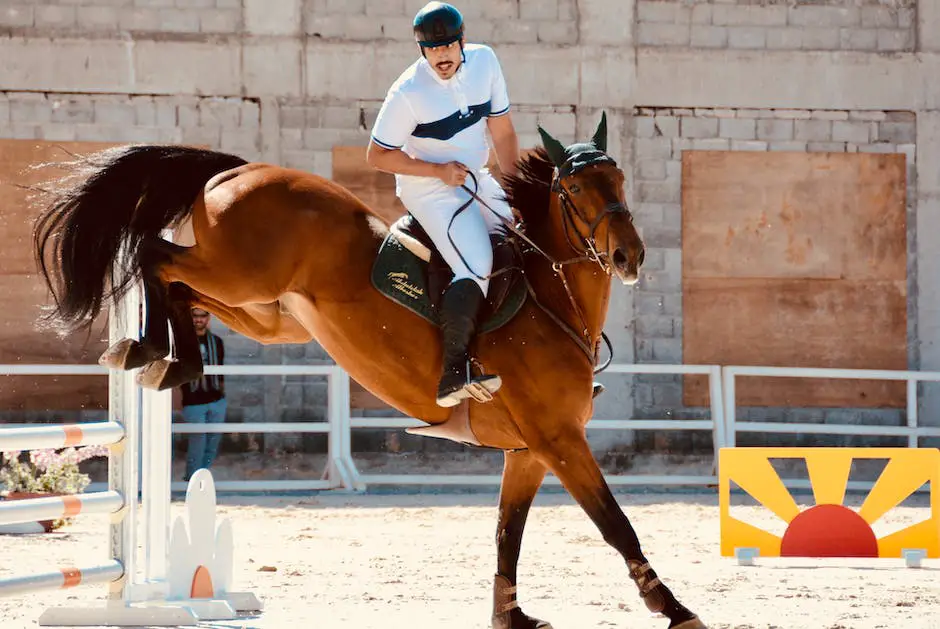
Kentucky Saddleseat Equitation
Learn about the Saddlebred horse: As the breed most commonly used for Saddleseat equitation, it’s essential to familiarize yourself with the characteristics, abilities, and history of the American Saddlebred horse. Research their conformation, way of moving, and disposition to better understand why they are ideal for this discipline.
Choose the right equipment: To begin your Kentucky Saddleseat riding journey, invest in the essential equipment, such as a cut-back or flat saddle, snaffle bridle, saddle pad, girth, and appropriate riding attire (jodhpurs or breeches, Saddleseat saddle shoes, and a riding helmet).
Find a reputable instructor or school: Locate a knowledgeable instructor or riding academy specializing in Saddleseat equitation. Ensure they follow proper safety measures and provide well-trained horses suitable for beginners.
Understand the basics of Saddleseat riding:
- Mount the horse correctly: Always mount your horse from the left side, placing your left foot in the stirrup and swinging your right leg over the horse’s back while holding the reins and saddle’s pommel.
- Adjust stirrup length: Stirrups should be shorter compared to other disciplines, with just a slight bend in your knee when in the saddle.
- Learn the appropriate riding position: Saddleseat focuses on a deep, upright seat with vertical alignment from ear to shoulder, hip, and heel. Your legs should be slightly forward with the heel slightly lower than the toe.
Develop your communication with the horse: Learn to communicate with your horse using proper rein contact and leg aids. Use gentle pressure, not force, to cue your horse for turns, transitions, or lengthening and shortening of strides.
Master Saddleseat gaits: Saddlebred horses have five gaits instead of the typical three, which include the walk, trot, canter, slow gait, and the “rack.” Familiarize yourself with these gaits and learn how to ask for them through appropriate cues.
Practice proper etiquette and showmanship: This includes saluting the judge, properly spacing yourself from other riders in the ring, and maintaining a confident demeanor while riding. Study-mounted exercises such as figure eights, serpentines, and maintaining a straight line down the long sides of the arena.
Participate in schooling shows or clinics: Once you feel confident in your Saddleseat riding skills, seek out opportunities to participate in Saddleseat competitions or clinics. These experiences will help you understand the expectations and strategies needed for success in those events.
Continue building your skills: As with any discipline, constant practice and learning are key to improvement. Regularly attend lessons, clinics, or workshops, and always strive to refine your technique and knowledge of Saddleseat equitation.
Embrace the Saddleseat community: Get involved with local Saddleseat clubs, organizations, or associations. Attend shows, competitions, or social events to meet other enthusiasts and share your passion for this unique and exciting riding discipline.”
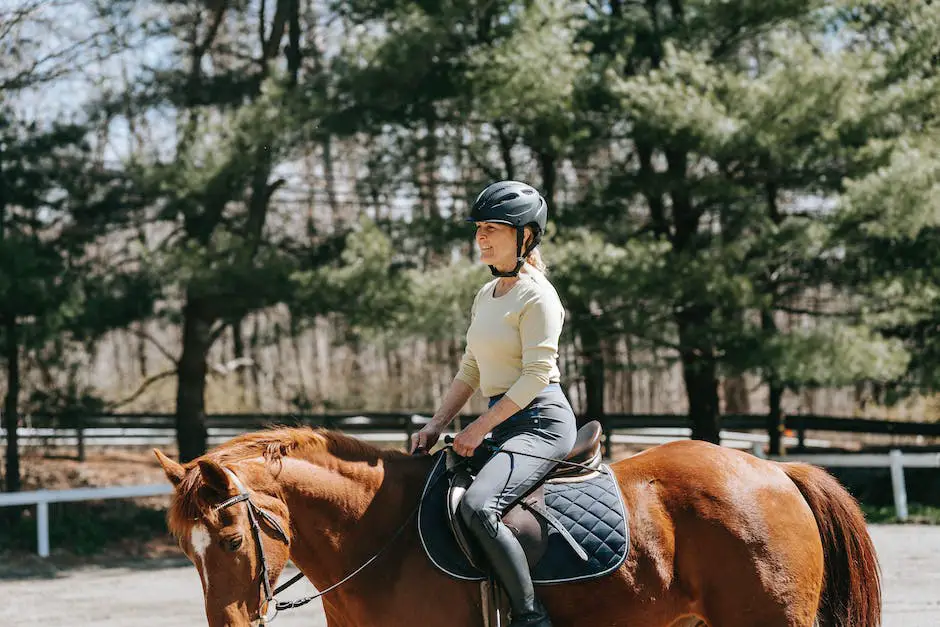
Show Preparation & Performance
Preparing for a Kentucky Saddlebred show competition involves several steps to ensure both the horse and rider are looking their best and ready to perform. Proper attire, grooming, and warm-up routines are essential for making a great impression and delivering a successful performance. Here are some instructions to help you prepare for your big day.- Traditional Saddlebred show attire includes a dark-colored riding jacket, light-colored or white riding pants, black or brown tall riding boots, a dress shirt, and a conservative necktie.
– Gloves should be worn as they are mandatory, with black or brown leather gloves being the preferred material and color.
– If the competition involves riding astride, females should wear a riding skirt or a side-saddle riding suit. Chaps are also acceptable attire.
– Wear a riding helmet that meets current safety standards and is appropriately fitted.
– Hair should be neatly secured in a hairnet or bun for female riders or combed back for male riders.- Thoroughly brush the horse, using different brushes for different areas. Start with a curry comb to remove loose hair and dirt, then use a dandy brush to further clean the coat, and finish with a soft body brush to bring out shine.
– Check your horse’s mane and tail, ensuring that they are clean and tangle-free. Use a mane and tail conditioner to achieve a smooth and glossy finish.
– Clean the horse’s hooves, picking out any debris and applying hoof oil or sealer to provide a polished appearance.
– Trim any excess hair, including hair around the fetlocks, ears, and muzzle.
– Bathe the horse if necessary, using a mild horse shampoo and warm water to remove any stubborn dirt and stains.- Clean and polish your saddle and bridle, making sure that leather is well-conditioned, and all metal fittings are polished and free of corrosion.
– Check the fit of your tack, ensuring the saddle sits correctly on the horse’s back, and that there are no areas of pinching or discomfort.
– Ensure that your bit is legal for the competition and sits comfortably in the horse’s mouth.
– Attach any required show accessories, such as a show bridle, tie-down, or breastplate.- Start with a slow walk, gradually increasing the pace to a working walk or trot, depending on the horse’s comfort level.
– Incorporate circles, serpentines, and transitions between gaits to help your horse become more supple and responsive.
– If the competition involves specific movements or patterns, practice these on both reins to ensure the horse is familiar with the required actions.
– Allow your horse a brief opportunity to relax and catch its breath before entering the competition ring.- Stay calm and focused, projecting confidence and a positive attitude to help ensure a successful performance.
– Pay attention to your posture and position in the saddle, as proper form is essential for effectively guiding your horse during the competition.
– Stay attentive to the judge’s signals and be prepared to execute any required movements or transitions promptly and accurately.
– Lastly, remember to have fun! Although competitions can be stressful, they are also a chance to showcase your skills and bond with your horse.
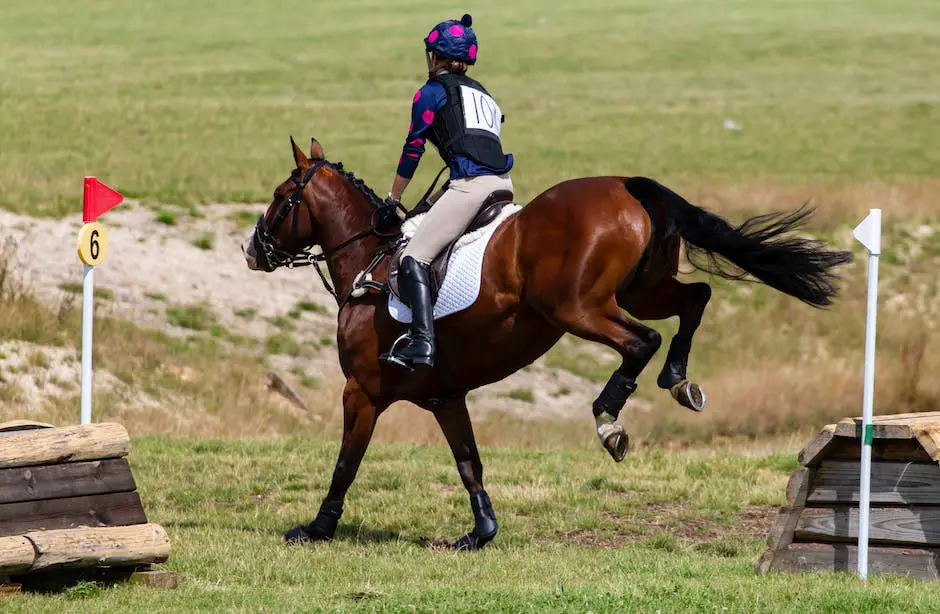
Upon completion of these Kentucky Saddlebred riding lessons, you will emerge as a well-rounded equestrian enthusiast with a newfound appreciation for the breed and its versatile abilities. Your newfound skills and knowledge will undoubtedly enable you to shine in various equestrian disciplines, including the elegant Saddleseat equitation. So saddle up and embrace this incredible opportunity to deepen your connection with the majestic Kentucky Saddlebred and unlock your true potential as a dedicated and passionate rider.
